In our ninth installment of Surf Cinema Sundays powered by TheSurfNetwork we’re going to show Five Summer Stories, included in your Surfline Premium membership, on July 5th. We’ll continue showing iconic surf movies every other Sunday. (Next up: Ultimate Sessions, July 19th.) If you’re not already Premium, sign up for a Surfline free trial here, and you can also stream/rent the film by going to TheSurfNetwork’s site.
[FAQ: How to watch Surf Cinema Sunday films]
Love Surf Movies?
You can watch ‘Five Summer Stories’ — and a thousand other surf flicks — by going to thesurfnetwork.com any time.
Since the day filmmaker Bud Browne first screened Hawaiian Surfing back in 1953, there have been many good surf movies. The distinction here being films that were screened to an actual paying audience of surfers and their infinitely patient girlfriends. This particular, pre-digital genre, which flourished during the period between Browne’s seminal effort in ’53 and the final screening of Bill Delany’s Free Ride in 1978, saw the release of many fine films, Free and Easy, Morning of the Earth, The Forgotten Island of Santosha, Goin’ Surfin’ and Free Ride among the best. During these halcyon days surfers could hoot themselves hoarse at plenty of good surf movies. But at only two actually great surf movies. One was Bruce Brown’s The Endless Summer, the film that, during its hugely successful wide screen release in 1966, introduced the sport of surfing to the world, and the world of surfing to itself. The other, coincidentally enough, also had ‘summer’ its title. This was Five Summer Stories, released by MacGillivray-Freeman Films in 1972, and judged by any informed standard, even against Brown’s masterwork, must be considered not merely a great surf movie, but the greatest surf movie ever made.
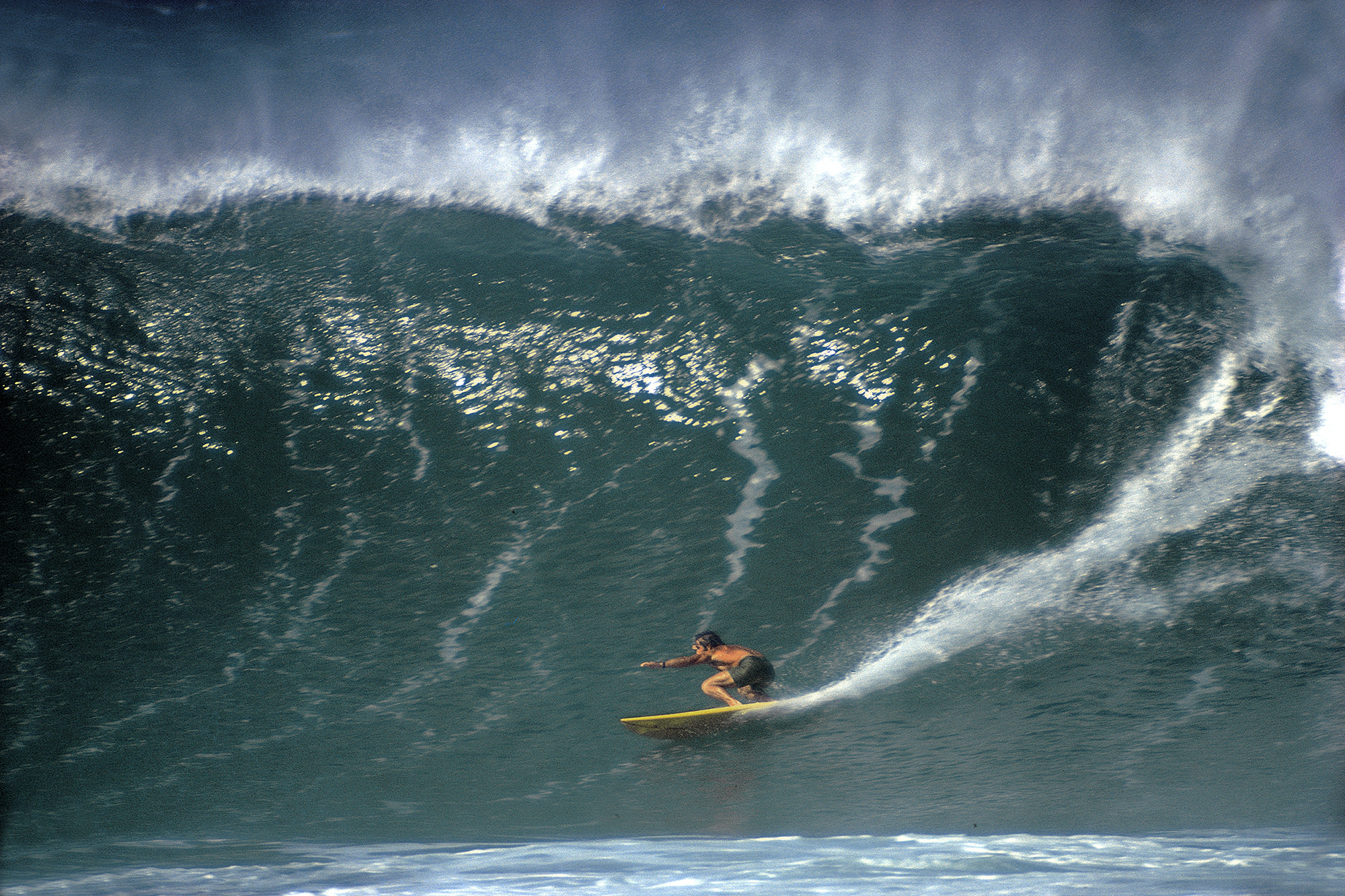
As a filmmaker (and surfer) MacGillivray was drawn to both Jeff Hakman’s athleticism, and his smile. “On almost every wave you could tell he really loved what he was doing.” Photo: Jeff Divine
“Because Jim and I were getting so busy doing commercials and Hollywood projects, we knew this was going to be our last surf movie,” says Greg MacGillivray, who, along with this partner, the late Jim Freeman, was one of the period’s most prominent surf filmmakers. “So we were determined to treat the audience to something special.”
Premium Perks: One Free Surf Movie Rental From TheSurfNetwork. Eligible Premium members redeem here.
“Special” may have been an understatement. Consider what surfers had been crowding into various vet’s halls and high school gymnasiums to hoot at before Five Summer Stories premiered on March 24th at the Santa Monica Civic Auditorium. Up until this point, the medium was remarkably uniform: 16mm footage of various top performers, filmed at a surprisingly narrow selection of surf spots, mostly from shore (with the occasional shaky, spotty water shot) presented with no apparent context along with blood-curdling wipeouts, corny humor sequences, and the gratuitous smattering of bikini babes. Musical scores were characteristically awful, a discordant blend of Muzak and gladiatorial NFL soundtracks (for the Waimea Bay section.) Sure, by the late 1960s surf filmmakers were scoring their movies with current “needle drop” cuts, scrounged, apparently, from whatever eight-track tapes they had rattling around the passenger foot well of their VW Bugs. Yet as cool as this transitional era’s surf movies might have been (Hal Jepson’s Cosmic Children, Paul Witzig’s Evolution and John Severson’s Pacific Vibrations come to mind) and how eager surfers were to plop down $2.50 a ticket, when viewed in retrospect they were, on the whole, crudely shot, thoughtlessly scripted and unimaginatively produced.
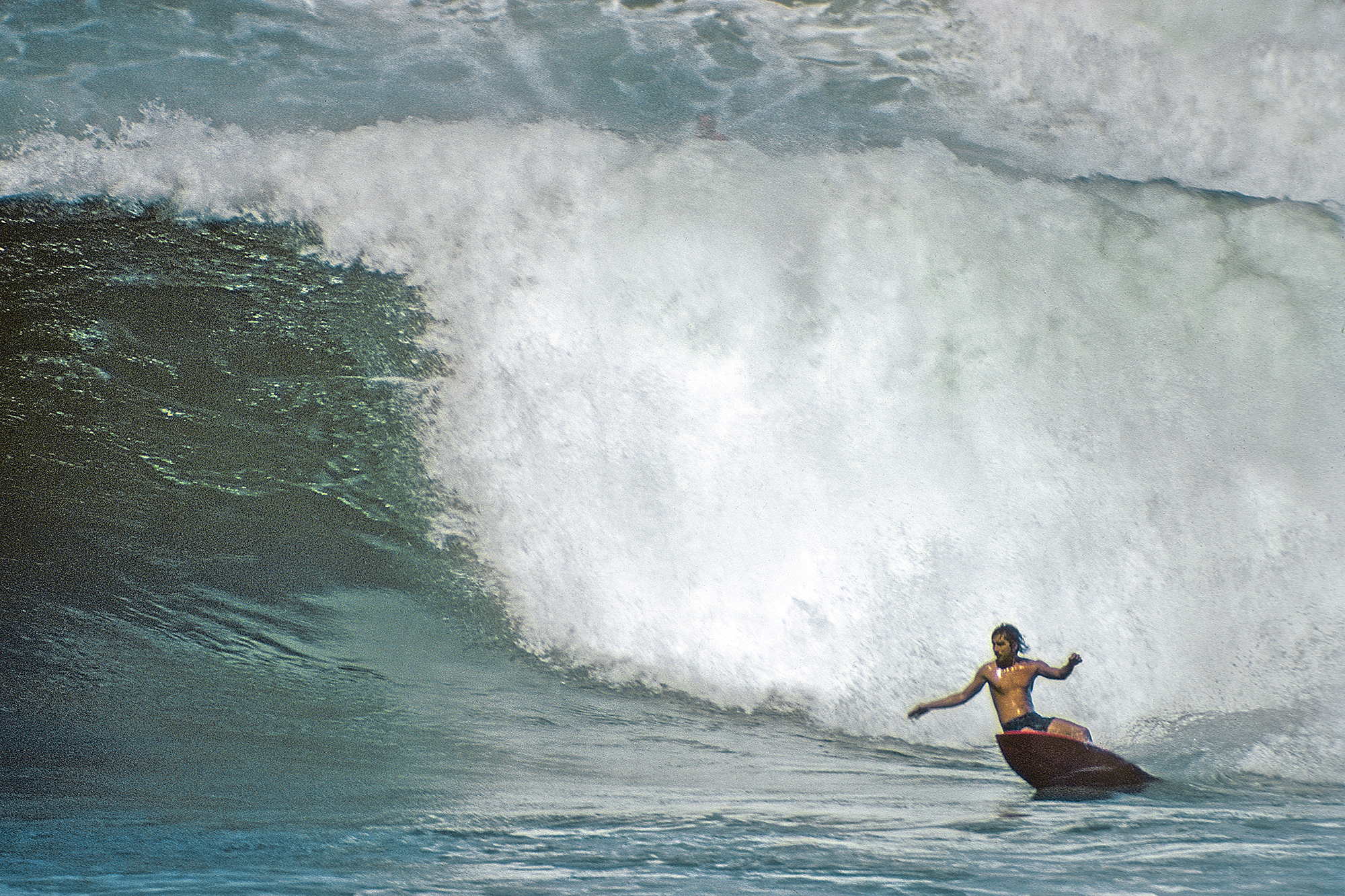
For all of Lopez’s frontside tube mastery on display, the film features a seldom-seen backside performance from the era’s most famous goofy-foot. Photo: Jeff Divine
All that changed with Five Summer Stories. MacGillivray and Freeman had been prolific throughout the 1960s, releasing a number of popular, albeit traditional, surf films, including The Performers, Free and Easy and The Sunshine Sea. This last film most interesting in that while the production straddled 1968’s seismic ‘shortboard revolution’, the decision was made to produce a more mainstream-friendly product, ala The Endless Summer. Funny, then, that the movie’s original title, Waves of Change, perfectly described the pair’s next release, slated for its premier on that warm Friday night in ‘72.
Keep in mind that by then most of those filling the Civic’s 3000 seats had seen all of those other surf films, having squinted through Evolution, toked through The Cosmic Children and tripped through Pacific Vibrations; they knew what to expect. Or so they thought. Because from that moment the lights went down and the screen lit up, the audience of raucous surfers quickly realized that they were in for something completely different.
First was the sound, a sonic wave emanating from an innovative stereophonic synchronous sound system that ate up a considerable portion of the production’s then unheard of budget of $72,000, and that MacFree employed to blast their soundtrack though special oversized speakers and amps—and the audience back into their seats.
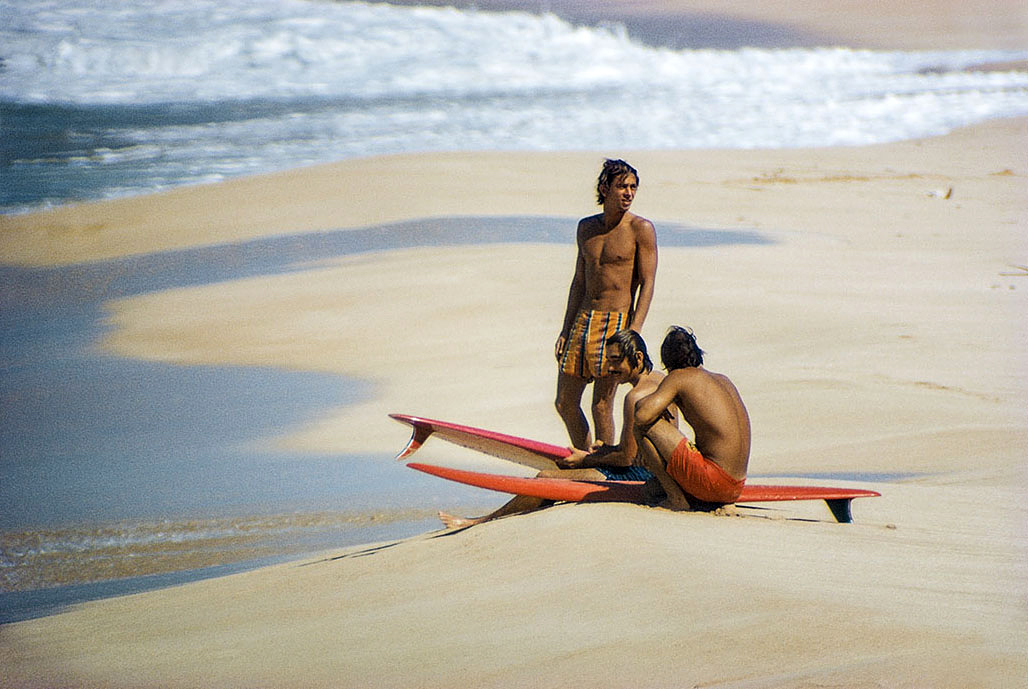
Down home and down rails: Five Summer Stories balanced both an accurate and idealized depiction of the North Shore experience during the early Seventies. Herbie Fletcher, BK and Gerry, living it. Photo: Jeff Divine
“We were determined to make the sound a memorable experience on it’s own,” remembers MacGillivray. “So we had this thing called a Magna-Sync machine with a stereo head that, reading the sound off a piece of film, boosted the frequency response from about ten bits of sound to about a thousand. That’s like the difference between listening to a car radio and going to a rock concert.”
The rock concert analogy works, because at that very first screening in Santa Monica, when accompanying a colorfully abstract, solarized effect applied to water shots of giant Pipeline the first mighty chords of the film’s score shook the auditorium to its rafters, 6000 flip-flopped feet started to stomp and didn’t let up through the entire film.
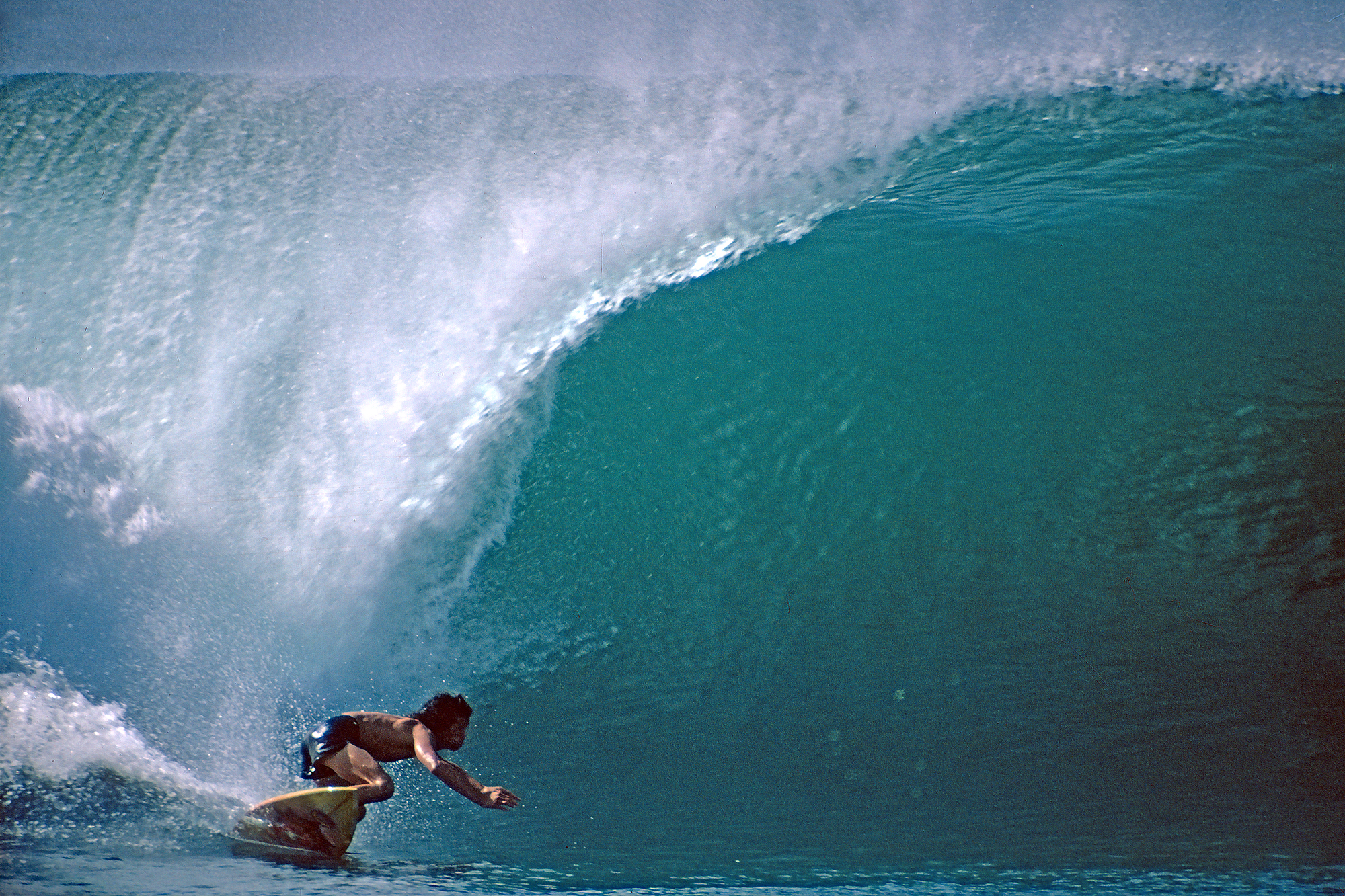
While the film’s cast featured many of the best surfers in the world, in 1972 David Nuuhiwa was more than hot—the talented Hawaiian transplant was already a legitimate surf star. Photo: Jeff Divine
David Nuuhiwa. Photo: Jeff DivineThe movie did have its obligatory elements. Flight from the mainland landing in Hawaii? Check. North Shore-as-idyllic paradise sequence? Check. Beautiful girls in bikinis? Check. Yet beyond these hackneyed tropes what elevated the rest of its ‘stories’ from more typical surf fare was a thoughtful depiction of both the period’s top surfing personalities and the sport’s aesthetic progression. The performances, for example, of surf stars like Jeff Hakman, Barry Kanaiaupuni, David Nuuhiwa, Terry Fitzegrald and, most notably, Gerry Lopez, were for the first time presented in the context of what each was contributing to the sport’s collective id, rather than merely subjects that the cinematographer happened to capture that day.
“In a way we were trying to elevate the intellectual side of surfing,” admits MacGillivray, a life-long surfer himself. “The way that we profiled the surfers, and the anti-contest exploitation and environmental segments…it all just reflected a different kind of thinking about surfing. It wasn’t just about a nose ride or a slash or a turn, which was pretty much all that the other films offered.”
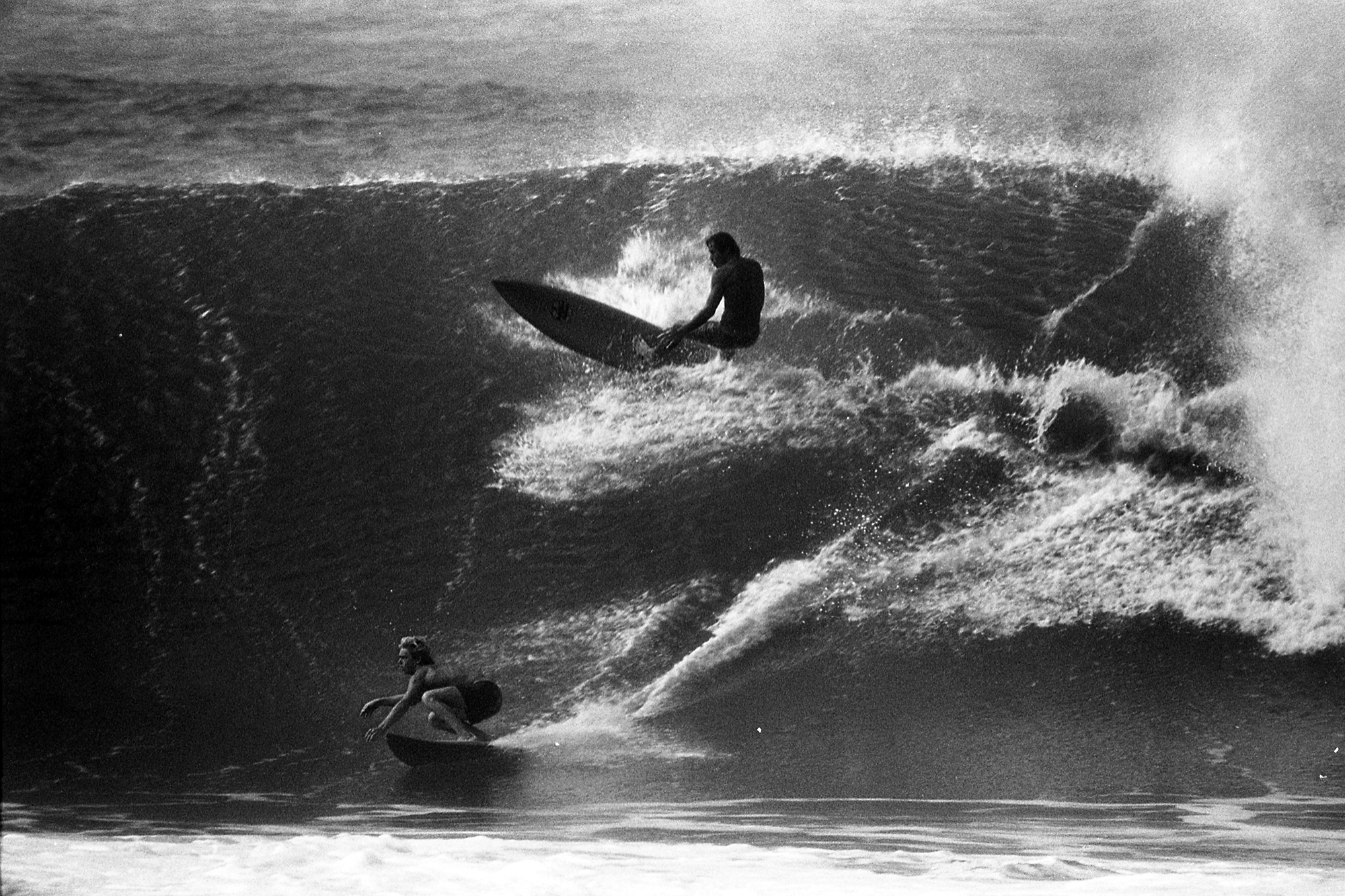
The raw, powerful surfing of Barry Kanaiaupuni, underscored by Craig Buhler’s rollicking, Chicago R&B sax riffs from Honk’s “Made My Statement”, is one of the film’s highlights. Photo: Jeff Divine
How all this was being filmed was just as illuminating as why, and again, was like nothing ever seen at the time. Breaking from the standard Bolex/Century 230mm lens perspective, Mac-Free enlisted a military-issue 16mm Mitchell camera capable of shooting at 600 frames a second—ultra slow-motion—deployed with a 1000mm lens on land, and a second Mitchell, wielded by the indomitable Bud Browne, a human fish, apparently, capturing water shots at 200 frames per second. These technical advancements helped the filmmakers imbue the surfing in Five Summer Stories with unmatched vibrancy and visual clarity.
“Slowing it all way down gave the film this whole new dimension,” says MacGillivray, obviously still moved by the effect all these years later. “With water drops looking like diamonds, it was unbelievably beautiful. We see it that way when we’re surfing in real life because our brains slow everything down, like the sunset, the spray of a cutback, a backlit wave. So filmed at 600 frames a second, surfing never looked so pretty.”
All this imagery was then set to the most ambitious surf movie soundtrack ever recorded. To start, MacGillivray’s friendship with Bruce Johnston, a member of The Beach Boys, one of the biggest acts in the world at the time, led to the contribution, sans budget-busting royalties, of several lush tracks from the band’s acclaimed 1971 album “Surf’s Up”, including “Feel Flows”, “Long Promised Road” and “Surf’s Up.” These critically acclaimed cuts from an iconic band provided Five Summer Stories with considerable artistic credibility, and yet MacGillivray wasn’t going to settle for simply sprinkling a few needle-drops throughout. His plan was to have a complete score composed for the entire film, and to this end he contacted a local Laguna Beach country rock band, fresh off a sold-out week at The Troubadour in Hollywood. The band was called Honk, and two of its founding members, Steve Wood and Tris Imboden, were lifelong surfers, who knew exactly what would sound right under footage of BK ripping Honolua Bay, or Lopez, spit out of Pipeline widow-makers in glorious, super slow motion.
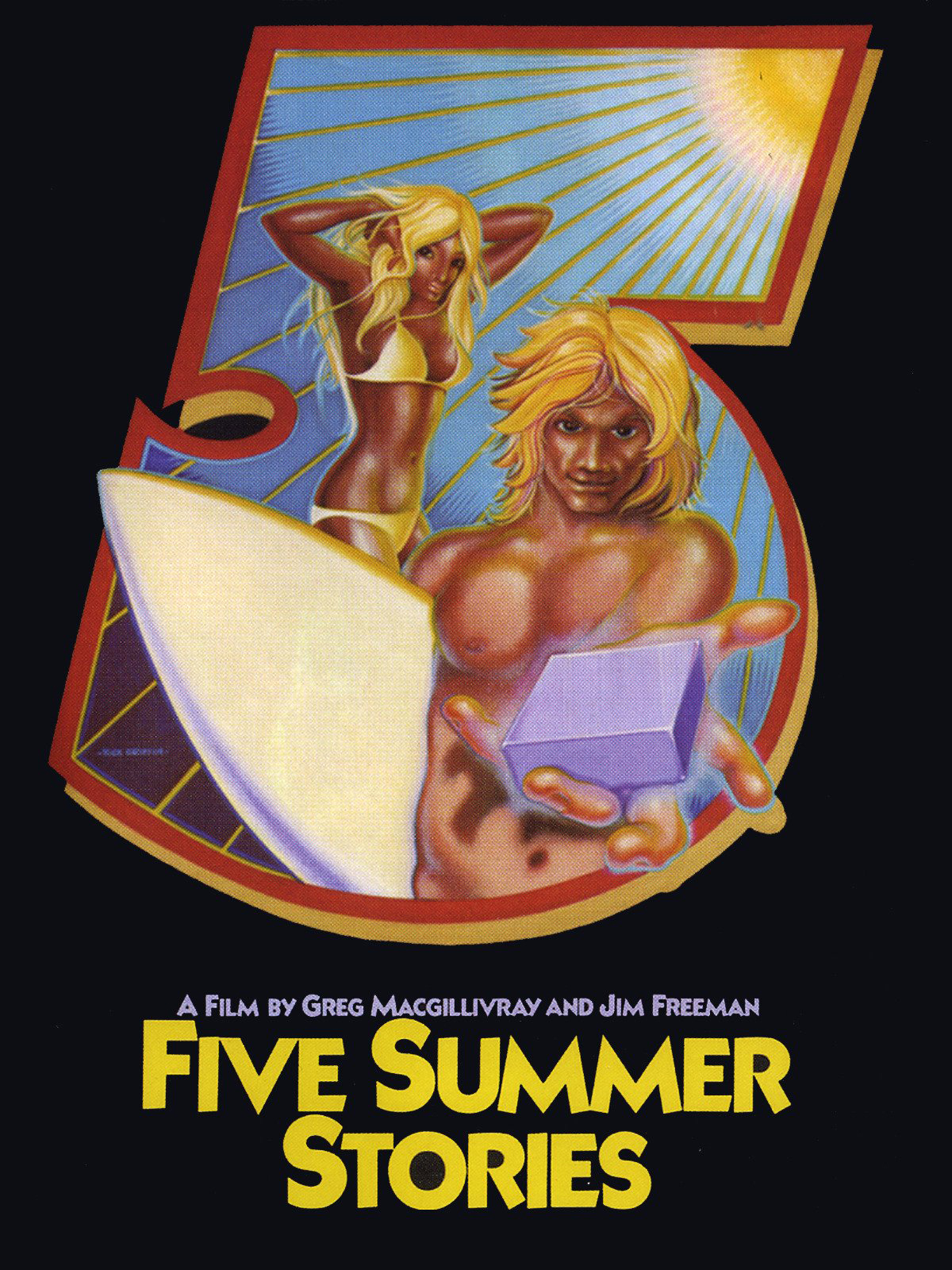
Had it been designed today both these poster blonde’s would be holding boards. In 1972, however, the renowned counter-culture illustrator Rick Griffin perfectly manifested every surfer’s vision of themselves…and their infinitely patient girlfriend.
The result was a film that, unlike most other surf movies of its time, did more than simply mirror was going on out in the water during the two years it took to film. Instead, Five Summer Stories presented a powerful audio-visual experience, with its depiction of the best surfers, shot with the best cameras and presented with best sound system confidently defining the state-of-the-art in both surfing and filmmaking, in a creatively integrated manner not seen before nor since.
“Jim and I knew that if this was going to be our last surf movie, we had to go way past what other films were doing,” says MacGillivray, who, as an innovator in 70mm IMAX cinematography and storytelling, is today the world’s most successful documentary filmmaker. “We were all-in, pushing all our chips to the middle of the table. We knew it was going to be hard. We knew it was going to be expensive. But if it worked, we knew it was going to be beautiful.”
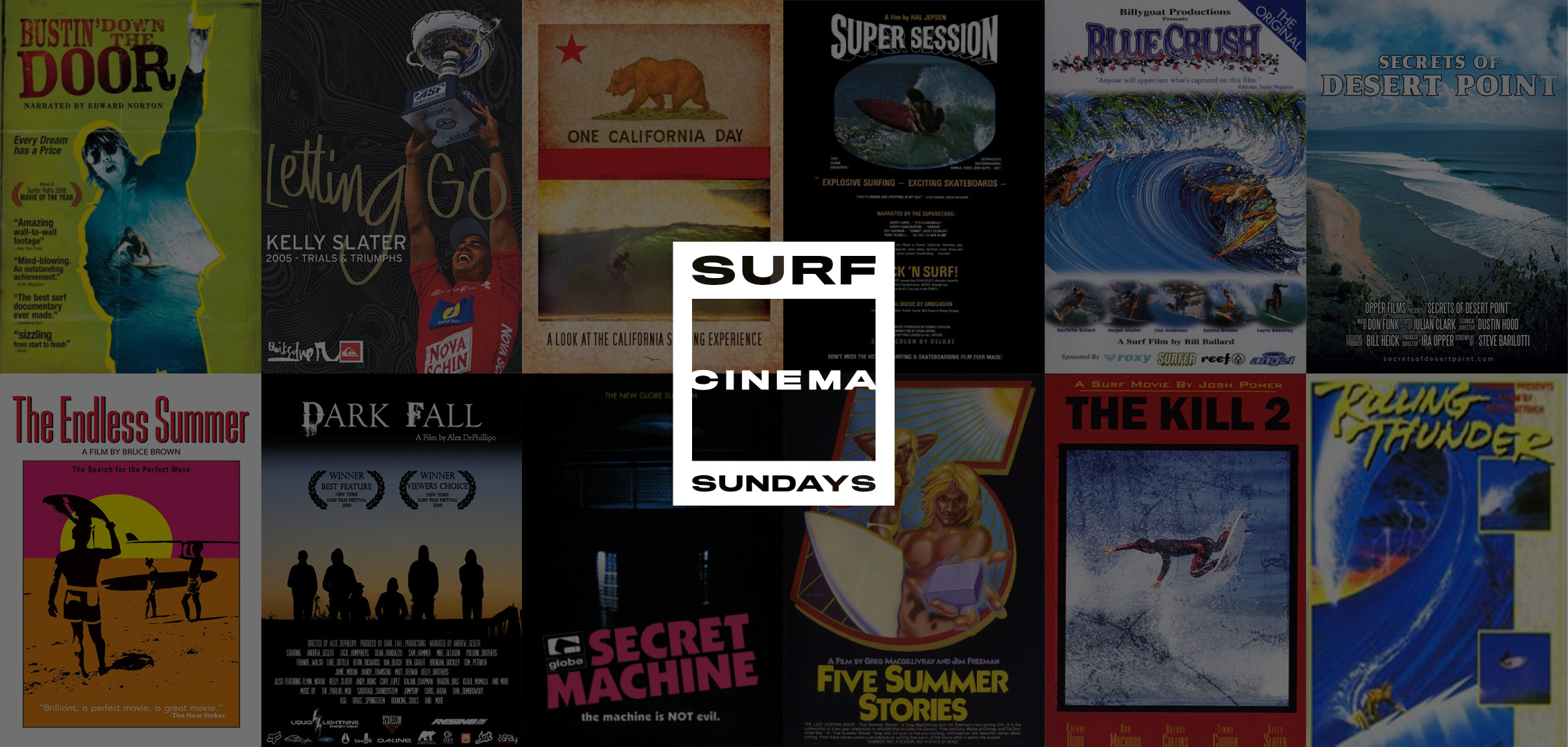
Bustin Down the Door. March 15
Letting Go. March 29
One California Day. April 12
Super Session. April 16
Blue Crush. May 10
Secrets of Desert Point. May 24
Dark Fall. June 7
Surfers: The Movie. June 21
Five Summer Stories. July 5
Ultimate Sessions. July 18
Rolling Thunder. August 1
More Films TBD





Recent Comments